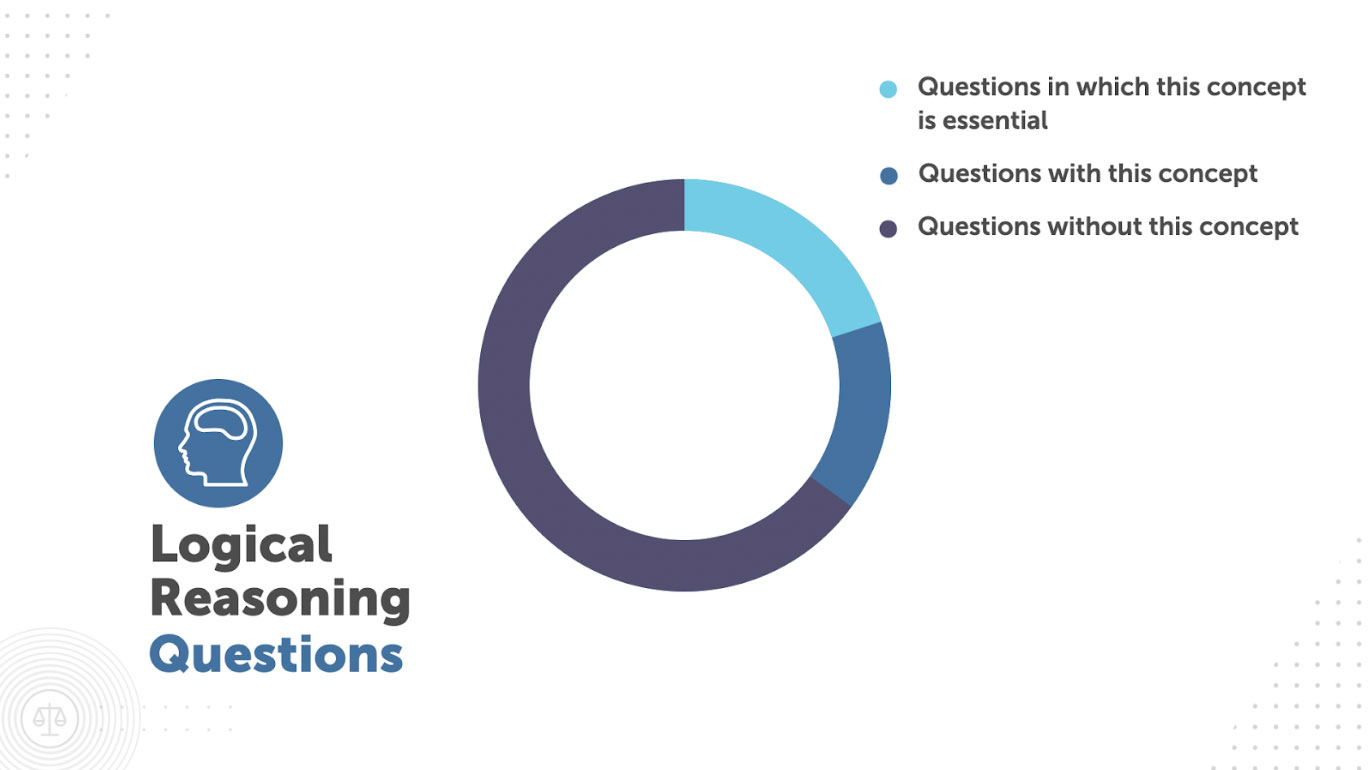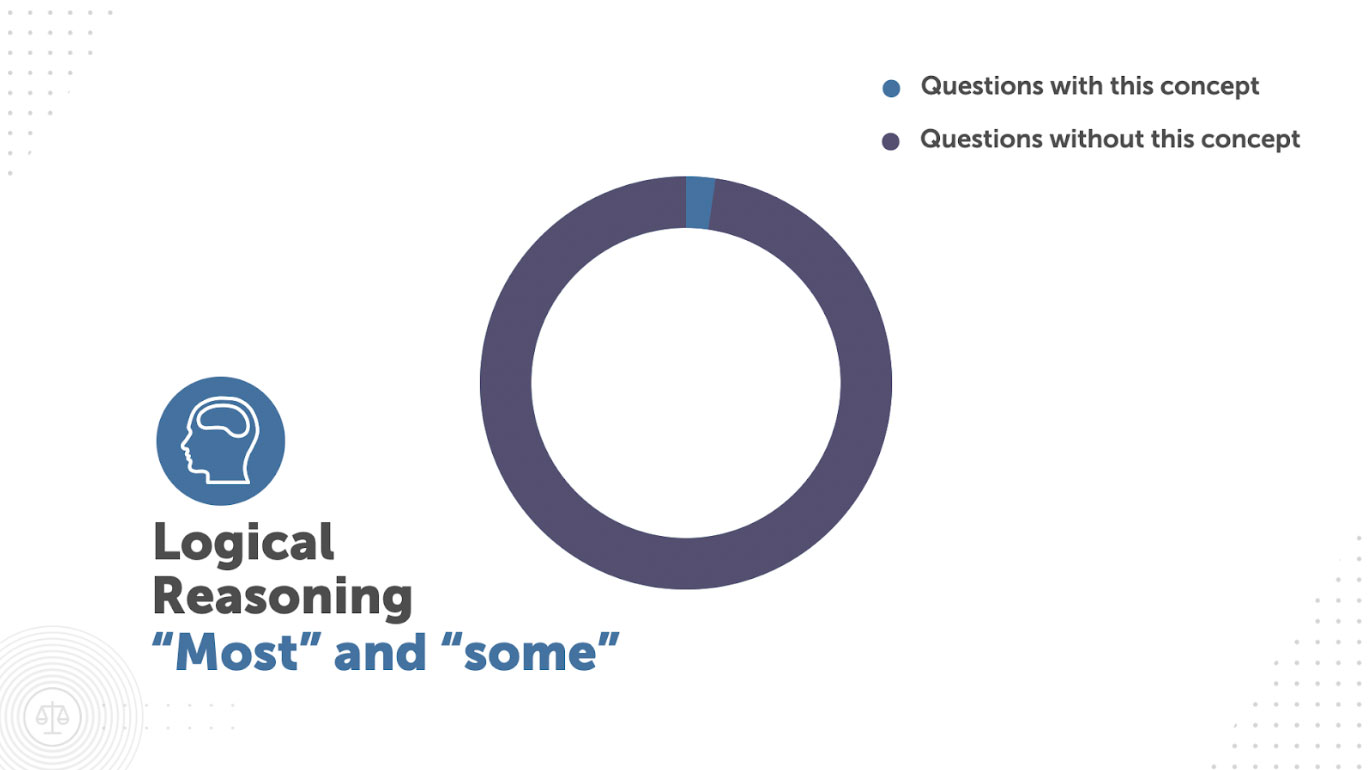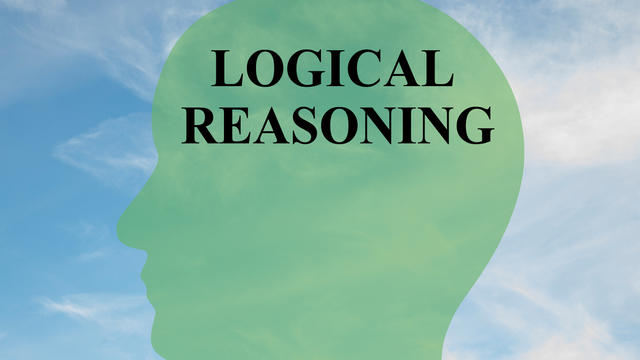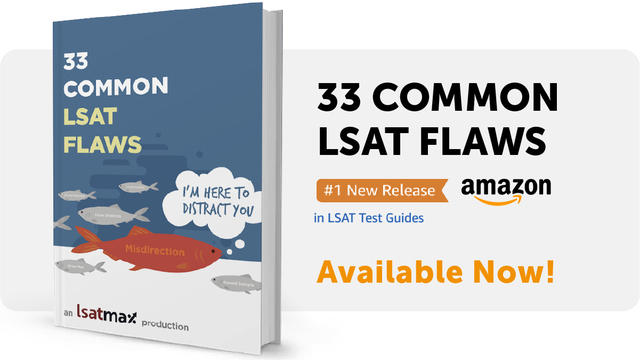If you've been studying for the LSAT, then you surely know about "if-then" statements. “If-then” statements (also known as “conditional statements” or statements with “sufficient and necessary conditions”) are sprinkled throughout the Logic Games and Logical Reasoning sections.
Just how common are “if-then” statements? This concept appears on over 35 percent of all Logical Reasoning questions. And this is central to 20 percent of Logical Reasoning questions. You may as well guess on those questions if you try to answer them without a strong understanding of “if-then” statements.
Plus, this concept appears on about 39 percent of all Logic Games. Solving these games would be really, really difficult without a solid grasp of this concept.


It’s so important to learn the intricacies of “if-then” statements — how to identify them, how to diagram them, how to analyze arguments that use them, and how to connect them to draw conclusions. Between Logical Reasoning and Logic Games, about 14 of your 75 raw score points will depend on your facility with this concept. Those 14 extra points could take your score from a 161 to a 175. Or from a 150 to a 160.
But, we’re not talking about “if-then” statements in today’s blog post. (This webinar can provide a good starting point with “if-then” statements if you’d like a primer.) Instead, we’re talking about related statements: “most” statements and “some” statements.
Like “if-then” statements, the LSAT will ask us to read and analyze “most” and “some” statements in a variety of contexts: we’ll need to read and identify them, diagram them, assess arguments that use them, and connect them with “if-then” statements to draw conclusions. But unlike “if-then” statements, we’ll only have to use “most” and “some” statements once or twice in a Logical Reasoning section (and almost never in a Logic Games section). So “most” and “some” statements are not quite as important as “if-then” statements. I mean, this chart looks much less formidable than the previous charts:

Building up your “if-then” statement skills is an essential foundation of a good LSAT score. Building up your “most” and “some” statement skills is not. Instead, these skills can be thought of as a “170-breaker” skill. While you can earn a score in the 160s without mastering this concept, this concept sometimes appears on the most difficult Logical Reasoning questions. These questions separate the test-takers who earn 170s from those who do not. The most challenging of these questions requires us to connect “most” and “some” statements to “if-then” statements and draw conclusions.
So, if you’re trying to crack the 170s, consider adding this skill to your toolbox. Fortunately, even though this skill is sometimes labeled under the intimidating banner of “formal logic,” there isn’t too much to it. Let’s walk through a few examples of how we can combine “most” and “some” statements with “if-then” statements.
First, let’s lay a few ground rules. Moving forward, we’ll refer to “if-then” statements as “all” statements. These are interchangeable terms. The claim “if it is an apple, then it is a fruit” is, for our purposes, the same as “all apples are fruit.” We can diagram them this way:
Apple → Fruit
We just need to make sure the “all” part goes on the left side of the arrow and the other part goes on the right.
We’ll diagram “most” statements in a similar fashion. We’ll put the “most” part on the left side of the arrow. In the claim, “most apples are red,” we’ll again put “apple” on the left side. We’ll add “most” to that arrow to clarify that we’re not necessarily referring to all apples.
Apple -most→ Red
“Some” statements are a little different. For those, we’ll use a double-sided arrow with “some” jammed in the middle. We can also put either condition on either side of the arrow. We can reverse “some” statements. That’s because the phrase “some apples are tart” is the logical equivalent of “some tart things are apples.” After all, “some apples are tart” means at least one apple is also tart. That implies that at least one tart thing is also an apple.
Apple ←some→ Tart
So, those are our ground rules. Now let’s get into the specifics of combining these statements.
“All” and “Some”
Let’s start by combining “all” and “some” statements. There are only two rules you need to worry about for these:
- The “all” and “some” statements must have one variable in common
- That variable must be on the left side of the arrow on the “all” statement
So let’s say we have two claims. One claim is that “All apples are fruit.” The other claim is that “some apples are tart.” Let’s diagram those as:
Apple → Fruit
Apple ←some→ Tart
And let’s refer to the rules. Do these claims have one variable in common? Sure, “apple.” And is “apple” on the left side of the arrow of the “all” statement? Again, yes. That means we can draw a conclusion. Hurray for us.
(Some people misremember the second rule here. They assume that the common variable must be on the left side of both statements. That’s not true. It doesn’t matter where the variable is on the “some” statement. Remember, those are reversible. Even if “apple” was on the right side, we could simply reverse that claim to put it on the left. This isn’t true for “all” statements, though. Those are not reversible. The common variable must be on the left side of the “all” statement.)
When you draw a conclusion here, there are again two rules:
- The common variable will not be in the conclusion.
- The conclusion is a “some” statement
So we can draw the following conclusion:
Conclusion: Fruit ←some→ Tart
In other words, some fruits are tart. We could also say that some tart things are fruits (Tart ←some→ Fruit), as “some” statements are reversible.
What about this example? Can we combine the “all” and “some” statements and draw a conclusion?
- “All frogs can jump. Some things that jump can dunk a basketball.”
What about this one?
- “All coffee-growing regions are equatorial. Some mountainous regions grow coffee.”
The answers are below.
“All” and “most”
Things will get a little more complicated with “all” and “most” statements. The first two rules are similar:
- The “all” and “most” statements must have one variable in common
- That variable must be on the left side of the arrow on the “all” statement
If those rules are satisfied, then we can ask a question:
- Is the common term on the left or right side of the “most” statement?
The answer to this question will affect whether we can draw a “most” or “some” conclusion.
If the shared term is on the left side of the “most” statement, here are the rules for drawing a conclusion:
- The common variable will not be in the conclusion.
- The conclusion is a “some” statement
So, let’s take this example: “All apples are fruit. Most apples are red.” We’d diagram those as:
Apple → Fruit
Apple -most→ Red
Do these claims satisfy the first two rules of combining “all” and “most” statements? Yes. We have a shared variable (“apple”) which is on the left side of the “all” claim.
For the next question, we ask whether the common variable is on the left or right side of the “most” claim. In this case, it’s on the left side. That means we can draw a “some” conclusion with the non-shared variables:
Conclusion: Fruit ←some→ Red
In other words, some fruit is red. Or, put another way, some red things are fruit.
But what if the common variable is on the right side of the “most” claim? In that case, we have a few rules about the conclusion:
- The common variable will not be in the conclusion.
- The conclusion is a “most” statement
- The variable on the left side of the “most” claim must be on the left side of the conclusion
So, let’s take this example: “All apples are fruit. Most items on sale at the grocery store are apples.” We’d diagram those as:
Apple → Fruit
On Sale -most→ Apple
Do these claims satisfy the first two rules of combining “all” and “most” statements? Yep. Once again, we have a shared variable (“apple”) which is on the left side of the “all” claim.
For the next question, we ask whether the common variable is on the left or right side of the “most” claim. In this case, it’s on the right side. That means we can draw a “most” conclusion with the non-shared variables, making sure the variable on the left side of the “most” claim is also on the left side of our conclusion.
Conclusion: On Sale -most→ Apple
So, most items on sale at the grocery store are pieces of fruit.
What about these examples? Can we combine the “all” and “most” statements and draw a conclusion? And if so, what conclusion can we draw?
- “Most English gardens have roses. All roses are pollinated by bees.”
- “All Dutch gardens have aromatic flowers. Most aromatic flowers cause allergic reactions.”
- “Most Japanese gardens have trees. All Japanese gardens are tranquil.”
The answers are below.
“Most” and “most”
The last combination we can make involves combining two “most” statements. There are only two rules you need to worry about for these:
- The two “most” statements must have one variable in common
- That variable must be on the left side of the arrow of both “most” statements
So let’s say we have two claims. One claim is that “Most apples are red.” The other claim is that “most apples are edible.” Let’s diagram those as:
Apple -most→ Red
Apple -most→ Edible
And let’s refer to the rules. Do these claims have one variable in common? Sure, “apple.” And is “apple” on the left side of the arrow for both “most” statements? Again, yes. That means we can draw a conclusion.
When you draw a conclusion here, there are two rules:
- The common variable will not be in the conclusion.
- The conclusion is a “some” statement
So we can draw the following conclusion:
Conclusion: Red ←some→ Edibles
In other words, some red things are edible. We could also say that edible things are red (Edible ←some→ Red). Recall that “some” statements are reversible.
What about these examples? Can we combine the two “most” statements and draw a conclusion?
- “Most lawyers took the LSAT. Most lawyers can’t combine two ‘most’ statements.”
- “Most physicians took the MCAT. Most people who take the MCAT understand basic scientific concepts.”
The answers are below.
This isn’t the only system to combine “most” and “some” statements with “if-then”/“all” statements. If you’re an LSATMax student and you’re more of a visual learner, we have an Office Hours session where we cover a visual technique that helps us map out conclusions. If you’d like a more personalized approach, you can book a session with one of our tutors!
— — — — —
Answer Key:
-
We can’t combine these two statements to form a conclusion. Here’s how we can diagram the claim, “All frogs can jump. Some things that jump can dunk a basketball”:
Frog → Jump
Jump ←some→ Dunk
Do these claims have one variable in common? Yes, “jump.” But is “jump” on the left side of the arrow of the “all” statement? Nope. When that happens, we can’t draw any conclusions, as much as we’d like to learn that a frog can dunk.
-
We can combine these two statements to form a conclusion. Here’s how we can diagram the claims, “All coffee-growing regions are equatorial. Some mountainous regions grow coffee.”
Coffee Grower → Equatorial
Mountainous ←some→ Coffee Grower
Do these claims have one variable in common? Yeah: “coffee grower.” And is “coffee grower” on the left side of the “all” statement? Yes, it is. It’s not on the left side of the “some” statement, but that’s OK. We only need to ensure that the common variable is on the left side of the “all” statement.
When our two rules for “all” and “some” statements are satisfied, we can draw a conclusion. The common variable (“coffee grower”) will not be in our conclusion. The conclusion will be a “some” statement with the other variables:
Conclusion: Equatorial ←some→ Mountainous
-
We can combine these two statements to form a conclusion. Here’s how we can diagram the claim, “Most English gardens have roses. All roses are pollinated by bees”:
English Garden -most→ Roses
Roses → Pollinated by Bees
Do these claims have one variable in common? Yes, “roses.” But is “roses” on the left side of the arrow of the “all” statement? Also yes!
So that brings us to the next question: Is the shared term on the left or right side of the “most” statement?
The right side. So, the following rules apply:
- The common variable will not be in the conclusion.
- The conclusion is a “most” statement
- The variable on the left side of the “most” claim must be on the left side of the conclusion
That means we can draw this conclusion:
Conclusion: English Garden -most→ Pollinated by Bees
-
We can’t combine these two statements to form a conclusion. Here’s how we can diagram the claim, “All Dutch gardens have aromatic flowers. Most aromatic flowers cause allergic reactions”:
Dutch Garden → Aromatic Flowers
Aromatic Flowers -most→ Cause Allergies
Do these claims have one variable in common? Yes, “aromatic flowers.” Is “aromatic flowers” on the left side of the arrow of the “all” statement? Negative. When that happens, we can’t draw any conclusions, least of all about the allergy-causing properties of Dutch gardens.
-
We can combine these two statements to form a conclusion. Here’s how we can diagram the claim, “Most Japanese gardens have trees. All Japanese gardens are tranquil.”:
Japanese Garden -most→ Trees
Japanese Garden → Tranquil
Do these claims have one variable in common? Yes, “Japanese gardens.” Is “Japanese gardens” on the left side of the arrow of the “all” statement? Again, yes!
So that brings us to the next question: Is the shared term on the left or right side of the “most” statement?
The left side. So, the following rules apply:
- The common variable will not be in the conclusion.
- The conclusion is a “some” statement
That means we can draw this conclusion:
Conclusion: Trees ←some→ Tranquil
-
We can combine these two statements to form a conclusion. Here’s how we can diagram the claim, “Most lawyers took the LSAT. Most lawyers can’t combine two ‘most’ statements”:
Lawyers -most→ Took the LSAT
Lawyers -most→ Can’t Combine “Mosts”
Do these claims have one variable in common? Yes: “lawyers.” And is “lawyers” on the left side of both statements? Absolutely.
When our two rules for combing “most” statements are satisfied, we can draw a conclusion. The common variable (“coffee grower”) will not be in our conclusion. The conclusion will be a “some” statement with the other variables:
Conclusion: Took the LSAT ←some→ Can’t Combine “Mosts”
-
We can’t combine these two statements to form a conclusion. Here’s how we can diagram the claim, “Most physicians took the MCAT. Most people who take the MCAT understand basic scientific concepts.”
Physicians -most→ Took the MCAT
Took the MCAT -most→ Understand Basic Science
Do these claims have one variable in common? Yes, “took the MCAT.” But is “took the MCAT” on the left side of the arrow of the “all” statement? Nope — only one. When that happens, we can’t draw any conclusions, even if it seems like most physicians should understand basic science.










